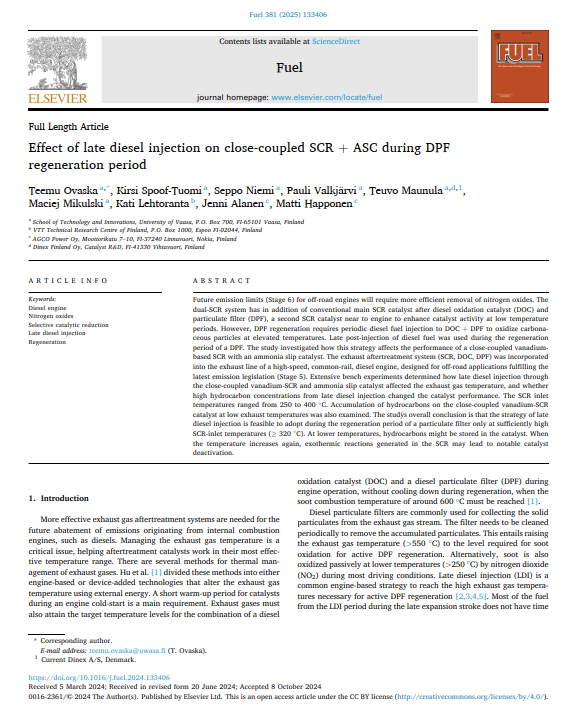Future emission limits (Stage 6) for off-road engines will require more efficient removal of nitrogen oxides. The dual-SCR system has in addition of conventional main SCR catalyst after diesel oxidation catalyst (DOC) and particulate filter (DPF), a second SCR catalyst near to engine to enhance catalyst activity at low temperature periods. However, DPF regeneration requires periodic diesel fuel injection to DOC + DPF to oxidize carbonaceous particles at elevated temperatures. Late post-injection of diesel fuel was used during the regeneration period of a DPF. The study investigated how this strategy affects the performance of a close-coupled vanadium-based SCR with an ammonia slip catalyst. The exhaust aftertreatment system (SCR, DOC, DPF) was incorporated into the exhaust line of a high-speed, common-rail, diesel engine, designed for off-road applications fulfilling the latest emission legislation (Stage 5). Extensive bench experiments determined how late diesel injection through the close-coupled vanadium-SCR and ammonia slip catalyst affected the exhaust gas temperature, and whether high hydrocarbon concentrations from late diesel injection changed the catalyst performance. The SCR inlet temperatures ranged from 250 to 400 °C. Accumulation of hydrocarbons on the close-coupled vanadium-SCR catalyst at low exhaust temperatures was also examined. The studýs overall conclusion is that the strategy of late diesel injection is feasible to adopt during the regeneration period of a particulate filter only at sufficiently high SCR-inlet temperatures (≥ 320 °C). At lower temperatures, hydrocarbons might be stored in the catalyst. When the temperature increases again, exothermic reactions generated in the SCR may lead to notable catalyst deactivation.




















